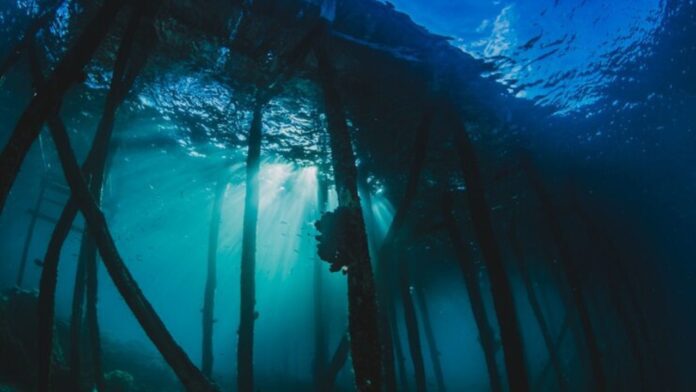In the year 2000, scientists made an incredible deep-sea discovery. Nestled on an underwater mountain west of the Mid-Atlantic Ridge, they found a vast hydrothermal field unlike any other known vent system. This alien world was fittingly dubbed the Lost City.
The Towering Pinnacles of the Lost City
The Lost City consists of lofty, creamy carbonate towers and columns that create a haunting underwater landscape. Ranging from tiny toadstool-sized stacks to a grand 200-foot monolith, these chimneys appear ghostly blue when illuminated by remote subs. The tallest pinnacle, named Poseidon, stretches an astonishing 60 meters high. Smaller carbonate stacks cover the area, sprouting like surreal mushroom forests across the seafloor. In addition, you can also read an article on- The Mysterious Young Age of Mars Rocks on Earth Explained
An Ancient Ecosystem Powered by Hydrocarbons
This exotic ecosystem has existed for at least 120,000 years, fed not by volcanic heat but chemical reactions between seawater and the upwelling mantle. Cracks and crevices in the Lost City’s vents spew hydrogen, methane, and other dissolved gases that support strange microbes. Although largely devoid of fish, 40°C vents still harbor snails, crabs, shrimp and other hardy creatures.
The vents produce abundant hydrocarbons through serpentinization – a geological process where seawater reacts with mantle rock to produce hydrogen, methane, minerals, and heat. This provides ample chemical energy to sustain life independent of sunlight. Amazingly, the Lost City’s ecosystems are believed to have persisted for over 100,000 years through serpentinization alone. Additionally, you can also read about- Study Suggests Massive Structures in Earth’s Mantle Originated From Ancient Planet Theia
A Window into Earth’s Early Origins of Life?
Unlike other seafloor vents, the Lost City’s hydrocarbons are abiotic in origin – produced without sunlight or atmospheric carbon. This opens the possibility that similar serpentinizing environments could have spawned early life on Earth, Europa, Enceladus, or even ancient Mars. Some experts believe studying these refuges is key to understanding life’s genesis.
The potential link to life’s origins has galvanized scientific interest in the Lost City. Serpentinization provides a steady supply of life’s basic ingredients – hydrogen, carbon, and minerals. If this process occurred on other worlds like Europa or Enceladus, it may have given rise to microbes in those alien oceans. Many researchers believe life first emerged around deep-sea alkaline hydrothermal vents similar to the Lost City.
You May Find Interest: Evidence Found of Theia Planet That Crashed Into Earth 4.5 Billion Years Ago
Tantalizing Glimpses of an Alien World
For scientists, the chance to study the Lost City’s unique ecosystems firsthand offers tantalizing opportunities. Remote subs have captured evocative glimpses of its towering carbonate skyscrapers and lush microbial communities. But many mysteries remain unsolved about the serpentinizing processes powering this oasis. Direct exploration and sampling by manned submersibles could reveal valuable insights about subsurface life’s origins and survival.
Unfortunately, the extreme depth and remote location make manned exploration logistically challenging. For now, scouring the Lost City’s hidden crevices and sampling its mineral-rich deposits remains out of reach. But its allure continues to capture scientific and public imagination alike. Each glimpse fuels speculation about what secrets lie hidden in its depths.
Protecting a Natural Wonder from Destruction
Tragically, the Lost City’s isolation did not spare it from human ambition. In 2018, Poland secured rights to mine the surrounding seabed, threatening the delicate chimneys with disruption. While the vents themselves lack valuable minerals, mining plumes could still smother this irreplaceable ecosystem. Conservationists urge classifying the Lost City as a World Heritage Site before it’s too late.
For tens of thousands of years, the Lost City has endured as a testament to life’s tenacity. It would be a profound loss for humanity to forfeit its lessons due to shortsightedness. This natural wonder merits our reverence and protection. Scientists implore further expeditions to unravel its outstanding scientific mysteries before any mining proceeds. We have only begun to understand the secrets held in its mineral halls. With care and foresight, the Lost City’s ancient echoes could resound for millennia to come.


















![10 Countries With the Best Healthcare in the World [Statistical Analysis] Countries With the Best Healthcare in the World](https://articleify.com/wp-content/uploads/2025/07/Countries-With-the-Best-Healthcare-in-the-World-1-150x150.jpg)










